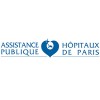
Head-down Position for Acute Ischemic Stroke With Large Artery Atherosclerosis
Ischemic StrokeCurrently, the guideline recommended re-perfusion such as intravenous thrombolysis and mechanical thrombectomy as the most effective treatment for acute ischemic stroke. However, the two methods are restricted by a strict time window, which greatly limits the number of the patients receiving treatment. The abundant studies have suggested that good collateral circulation can provide compensatory blood supply to save the ischemic penumbra and reduces the infarct volume, which improves the prognosis. How to improve collateral circulation in an efficient and safe way is a clinical challenge. Our recent experiment results of the animal and preliminary clinical experiments show that head-down position may significantly increase cerebral perfusion and improve neurological function. Clinically, head-down position is simple and easy to operate, and theoretically may increases brain perfusion and improve collateral circulation. A pilot randomized clinical trial is designed to investigate the effect of head-down position combined with routine rehabilitation in patients with ischemic stroke.The study is designed to explore the efficacy and safety of head-down position in patients with acute ischemic stroke

Acute Ischemic Stroke Interventional Study
Acute Ischemic StrokeTo assess safety of single IV (bolus + infusion) doses of ACT017 in patients with an acute ischemic stroke in addition to best emergency standard of care (including fibrinolysis by rtPA with or without added thrombectomy), with a specific focus on hemorrhage, whether clinically symptomatic (NIHSS score + 4 points or death, without other explanation), or seen (excluding other diagnoses) on 24-hour (hr) CT scan, serious adverse events (SAEs), suspected unexpected serious adverse reactions (SUSARs), and medically important events and other safety items including biological and immunological tolerability.

Low-dose Versus Standard Dose Alteplase in Acute Ischemic Stroke , 4 Monthes Prospective Study
Acute StrokeCohort A Randomized Control trial of Ateplase 0.6, 0.75 and 0.9 mg/kg in 78 patients Cohort B single arm 0.9 mg/kg Ateplase in 330 patients Combined Cohort A and B evaluate different of death, intra-cerebral hemorrhage, numberof patient with mRS 0-1 at discharge and 3 months follow up, and other important stroke outcomes

Normobaric Hyperoxia Combined With Reperfusion for Acute Ischemic Stroke
StrokeAcuteNBO is a nonpharmacological measure of neuroprotection. The purpose of our study is to evaluate the safety and efficiency of NBO(Normobaric hyperoxia) in the acute ischemic stroke patients who received endovascular treatment. Looking for more clinical evidence for the ischemic stroke patients who will be treated with NBO in the future.

Thrombolysis With rhPro-UK in 4.5-6 Hours After Acute Ischemic Stroke in a Double-blinded,Controlled...
Acute Ischaemic StrokeThis is a randomized,controlled, double-blinded, phase 3 clinical study to evaluate the efficacy and safety of recombinant human urokinase(rhPro-UK) versus basic treatment for patients with acute ischaemic stroke in 4.5-6 hours after stroke onset.

The Effect of Venlafaxine on Language Function in Patients With Subcortical Aphasia: A fMRI Study...
Subcortical AphasiaIschemic StrokePrevious studies have demonstrated that venlafaxine significantly improves the language function of healthy subjects and increase of fMRI activation in cortical language area. This study was designed to investigate the relationship between venlafaxine on the cortical language functional reorganization and clinical language improvements in the stroke patients with subcortical aphasia. It is a randomized, controlled, single-blind, longitudinal trial which has approved by the ethics committee of Guangzhou General Hospital of Guangzhou Military Command, and all patients and their guardian should sign an informed consent. The patients will divide into the venlafaxine group and the control group according to the principle of randomization (random number table). The patients in the venlafaxine group begin to take a venlafaxine hydrochloride capsule after enrollment ( each containing venlafaxine 75mg), qd, until 4 weeks after randomization, and the control group do not. Assessments of language functional behavior and examines of functional magnetic resonance imaging (fMRI) should be performed on the first days (V1), 28±3 days (V2) and 90±3 days (V3) after randomization. Through all this procession, we expect improve the language function of participants in experiment and clarify its mechanism,the research may help develop a new treatment for other patients with similar conditions.

Effects of Mobile Application Dexteria Fine Motor Skills on Hand Dexterity and Grip Strength in...
StrokeIschemic3 moreTo determine the effects of mobile application dexteria fine motor skills on hand dexterity and grip strength in chronic stroke patients

Tenecteplase Treatment in Ischemic Stroke Registry
StrokeAcuteThe Tenecteplase Treatment in Acute Ischemic Stroke (TETRIS) Registry is multicenter ambispective observational study of patients with acute ischemic stroke who received intravenous thrombolysis with Tenecteplase

EXtending the tIme Window of Thrombolysis by ButyphThalide up to 6 Hours After Onset (EXIT-BT)
StrokeIschemicTo date, the time window of intravenous thrombolysis is limited within 4.5 hours of stroke onset. Although EXTEND study has proved that intravenous thrombolysis can be extended from 4.5 to 9 hours, but the eligible patients must be selected by CTP. Thus, it is of clinical importance how to extend the time window of intravenous thrombolysis, which can benifit more patients. The current trial aims to investigate the effect of intravenous thrombolysis with TNK from 4.5 to 6 hours in ischemic stroke with help of Butyphthalide, which was found to be neuroprotective.

Treatment of Acute Ischemic STroke With Edaravone Dexborneol II (TASTE-2)
Acute Ischemic StrokeMechanical Thrombectomy2 moreThis study is a multicentre, randomized, double-blind, placebo parallel controlled, investigator-sponsored study that aims to investigate the efficacy and safety of Edaravone Dexborneol treatment in patients with acute ischemic stroke who had received early reperfusion therapy.
